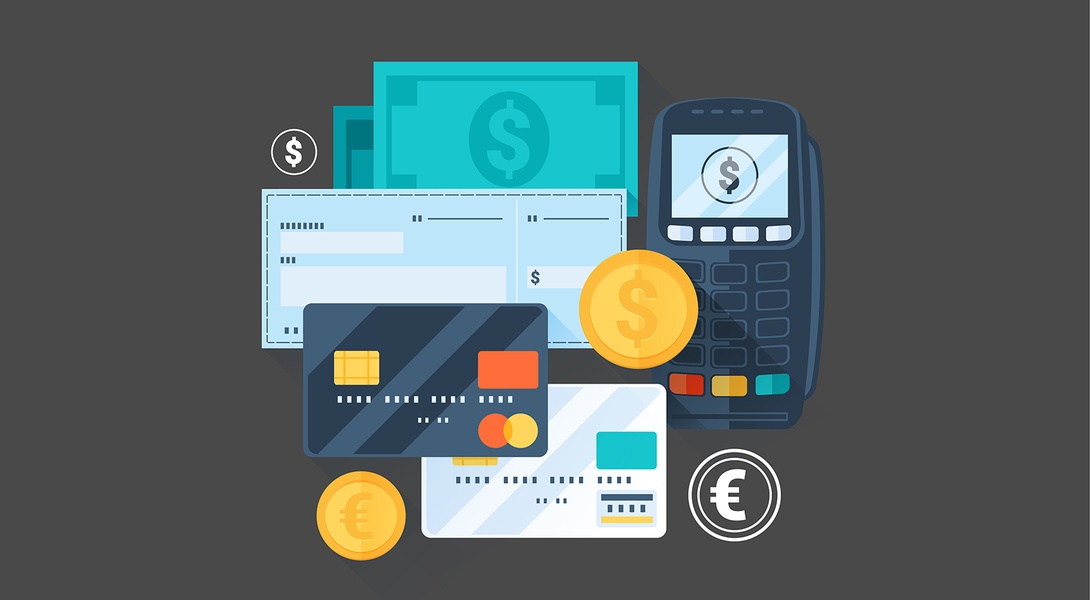Once upon a time, businesses could count on building long term relationships with their customers – face-to-face interactions and business deals completed on “spit and a handshake”. The old ways of doing business have changed and so have the expectations of your customers and those changes are rapidly forcing “hold-out” B2B companies to adapt or get left behind.
There are numerous B2B eCommerce challenges facing modern businesses and meeting the expectations of your customers means figuring out how they want to do business. From the point of view of the B2B merchant, the focus has to center on making it as easy as possible for the customer to do business with you.
When your energy is focused on delivering great customer experience, especially during the checkout process, you’re gaining efficiencies, building up a reputation as a “modern” vendor and making it easier for customers to reorder.
In the B2B world, one of the last dominos of change to fall is in the payments space. Customers who are used to shopping online with a credit card, paying bills and managing their finances online are looking for choices in how they pay. Offering flexible payment options during the checkout and shopping process for those B2B buyers is one way to meet those expectations.
Flexible eCommerce payment options blend traditional methods of payment processing (like cash on delivery, checks, and ACH transfers) with modern digital counterparts (like mobile wallets, third-party financing, and cryptocurrency). It’s in your best interest as a B2B seller to implement flexible payment options if you want to drive eCommerce conversions.
B2B Takes Cues from B2C
With retail eCommerce sales reaching $3.5 trillion worldwide in 2019, it’s no surprise that B2C companies want to make buying products and services as simple for the consumer as possible.
The B2C marketplace is becoming a digital, cashless landscape in which consumers expect businesses to accept a wide range of payment options, and businesses are happy to oblige. Complete a purchase on any popular consumer-facing eCommerce website, and you’re likely to find a cornucopia of payment options waiting for you at checkout.
B2B companies and large eCommerce wholesalers and distributors realize that B2C brands have the right idea. More and more B2B sellers are looking for ways to drive eCommerce conversions by offering digital payment options in addition to traditional methods.
Modern Buyers Want Modern B2B Payment Options
Forrester Research estimated in 2017 that B2B eCommerce in the United States will hit $1.8 trillion by the year 2023. That’s great news for B2B sellers who are on top of their payment flexibility.
What’s not great is that CSO Insights says only 53% of B2B sellers are making their quota in 2019. That means nearly half of B2B sellers aren’t going to get their piece of the eCommerce conversion pie this year.
There’s a good chance one big reason for this split is the lack of eCommerce payment options.
Traditional legacy payment options are fine. They do their job. When a B2B buyer provides a purchase order, the seller completes the order and an invoice is sent back. That’s how it’s worked for decades, and there’s absolutely nothing wrong with traditional payment methods.
The challenge facing B2B sellers today is that more buyers are comfortable using digital payment options. When faced with two competing sellers, a buyer is more likely to choose the one that’s able to work flexibly where payment is concerned.
Flexible B2B eCommerce Payment Options
Providing flexible payment options means just that—offering multiple ways in which a customer can pay. That doesn’t mean you should ditch the purchase order/physical check/credit options you already offer. It just means you’re likely to improve eCommerce conversions when more payment options are available.
Modern, flexible B2B payment options typically come in two flavors:
Traditional B2B payment options
- Instant credit: A credit line extended to a buyer instantly after a financial evaluation.
- Trade credit: An agreed-upon amount equal to goods or services in trade.
- Cash on delivery: Cash paid to the seller upon delivery of goods or services.
- Checks: Good old-fashioned paper checks.
- Wire transfer: Money transferred from one bank account to another, usually through a third-party facilitator.
- ACH transfer: Money transferred directly from one bank account to another.
- Purchase orders: An order is placed, an invoice is delivered, and payment is collected.
- Credit cards: Payment made using a personal or company credit card.
Digital B2B payment options
- Mobile wallets: A virtual wallet through which payment information is stored and used.
- Third-party financing: Financing offered through a third-party, usually with a hefty interest rate.
- Cryptocurrency: Digital currency that uses blockchain technology to process payments.
You don’t need to integrate each and every one of the above-listed payment options through your eCommerce platform, but variety is the spice of eCommerce life. The more options available for B2B buyer use, the better.
Things to Consider When Looking at Flexible B2B Payment Options
Not every payment option, traditional or digital, is the right fit for B2B sellers. What works well for one industry may flounder and go under-utilized by another. It’s important to consider a few things before jumping on a payment method bandwagon.
Product vs. Service
What do you sell? This simple question can determine what kind of payment flexibility you want to offer. Products and services are different beasts, and customers tend to pay for each in different ways.
B2B buyers are often more comfortable paying in full and upfront for products—things like widgets and components for wholesalers and distributors. Services, on the other hand, are less likely to inspire up-front payment confidence. It’s more common for B2B service sellers to be paid a deposit and then paid in full once services are rendered.
Key Considerations:
- Can your platform support multiple payments against an order? For example, customers may feel more comfortable making deposits or an initial payment against an order rather than paying the entire balance. Keep in mind that there may also be set up fees, “initiation” charges, etc.
- Depending on your product mix, review what types of payment methods are allowed for each kind of product. For example, it’s common for many sellers to only allow credit cards for subscriptions.
Small vs. large purchases
B2B transactions tend to be larger than their B2C counterparts, but there’s still an order size discrepancy to consider. There’s a difference between enterprise-level purchases and small or medium business purchases. Larger orders are often handled differently than smaller orders, just like products and services.
A medium-sized business buyer who routinely orders X number of widgets is probably spending less per order than an enterprise-level business buyer who makes large capital investment purchases.
Key Considerations:
- For large purchases, are customers able to manage their credit/account balance through a customer portal?
- Are customers limited in how much they can apply to their accounts?
- Can the customer make payments against their account balance?
Payment collection times
Does your business model allow for longer collection times, or is it crucial that you receive payment immediately? Payment collection and invoice processing can eat into valuable resources, and longer collection windows have a tendency to stifle cash flow for your business.
The average lifecycle of a B2B transaction is around 34 days. Is that something you can live with? Giving customers the tools for self-service can help to reduce that time gap.
Key Considerations:
- To fully complete the payment circle, you will want to remind customers that they can pay their invoices online.
- Depending on how much time and money is saved by moving the payment transaction online, are you offering a small discount to those customers?
- Make sure there are tools in place to allow your B2B customers to get an email confirmation or have the ability to print a receipt.
Flexible B2B Payment Options Are the Future
B2B companies are being forced to adapt and offer more flexible payment options as the B2B buyer now expects the same type of frictionless buying experience they get in the B2C space. B2B sellers can benefit from offering flexible payment methods that make it easier for customers to purchase online and pay their invoices faster.
The writing is on the wall: flexible payment options for B2B purchases are the future. Customers want the flexibility to pay their way, and you’re going to get left behind by the competition if you’re not offering that kind of payment flexibility.


